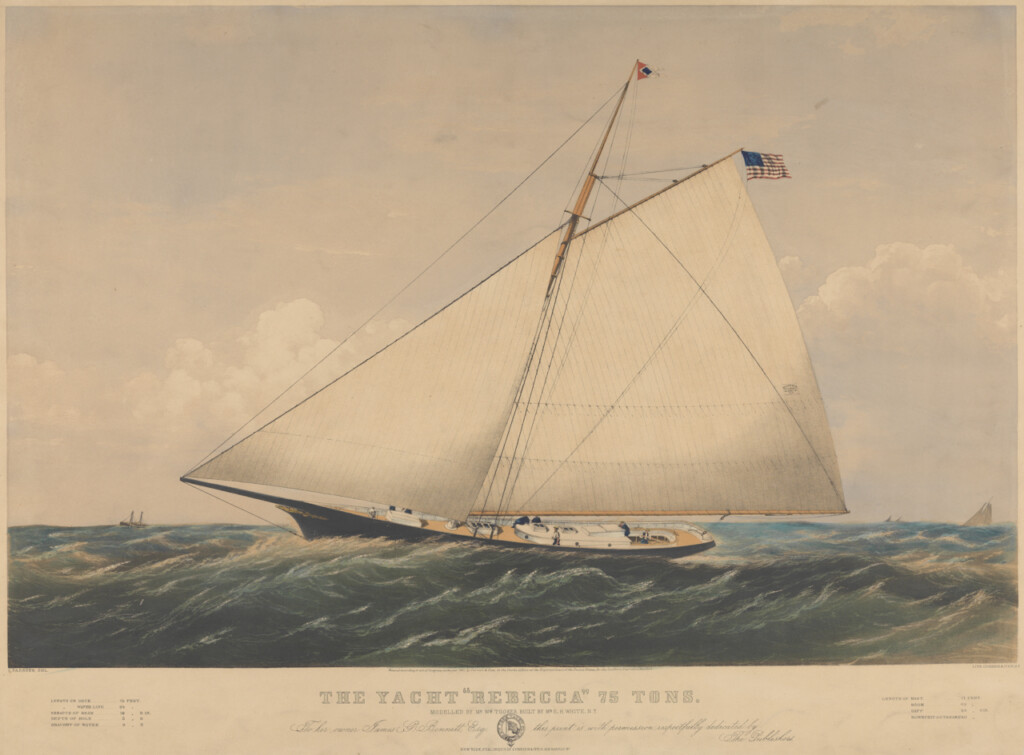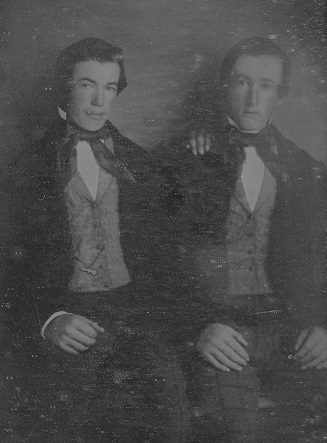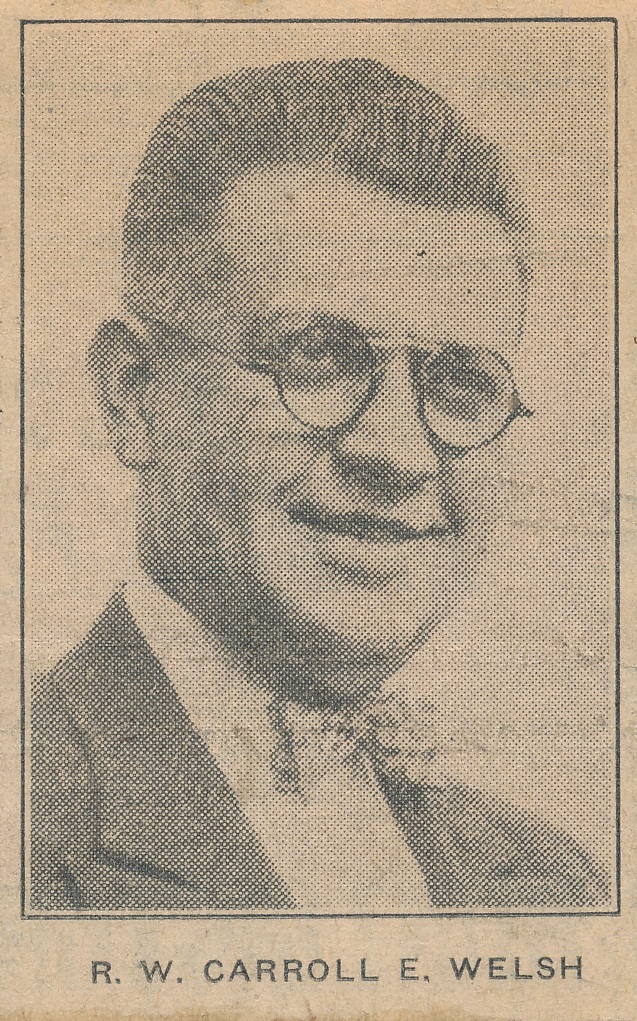The Seven Founding Brothers of Jephtha Masonic Lodge
By W:. Ronald J. Seifried, DSA
What do two shipbuilders, a ship’s captain, two farmers, a former Democratic U.S Congressman, a local active Republican and a disgraced freemason have in common? They are the seven charter members of Jephtha Masonic Lodge No. 494 in Huntington.
The First Meeting

The charter members William H. King, Jesse Carll, David Carll, John H. Jarvis, Phineas E. Sills and Charles A. Floyd laid the foundation of Jephtha Lodge at a meeting in the home of Francis Olmsted (1820-1901) in Northport on December 21, 1859, for the “purpose of taking into consideration the feasibility of establishing a Lodge in the Village of Huntington.”
It was unanimously agreed to submit an application to the Grand Lodge of Free and Accepted Masons of New York to form a Lodge. The application and $40 fee were submitted to Grand Secretary of Masons in New York on December 23, 1859.
The name “Jephtha” is based on a character in the Old Testament who served as one of the Judges in Israel for a period of six years (Judges 12:7) between the conquest of Canaan and the first king. Jephtha lived in Gilead and was a member of the Tribe of Manasseh.
The Planning Stage
The charter members first met in the sloop Rebecca in Huntington Harbor throughout January 1860. The brothers prepared themselves with the many initial plans and ritual work required to operate a masonic lodge. Captain John Knight guarded the door for any trespassers that may disrupt the secret meetings. The future freemason kept a pot of coffee heated in the forecastle of the yacht for the busy members during these frigid winter nights.

The first official meeting was held in a room over S.T. Shadbolt’s Harness Shop in Huntington Village on January 28, 1860. The purpose of this initial meeting was to elect the seven charter members to their respective officer stations. Other items on the agenda included obtaining an extended lease for future meetings and forming a committee to obtain the necessary regalia.
The Charter Members
William H. King was the acting Worshipful Master of Joppa Lodge No. 201 in Brooklyn during the initial planning meetings. Born in Maine in 1825, the 35-year-old farmer raised three children in Centerport with his wife Jane. The first registered brother and Master in three out the first four years for Jephtha (1860-61, 1863), King and Jonas Pearsall were instrumental in purchasing the property the lodge is currently located. At the dedication of Alcyone Masonic Lodge No. 695 in Northport in 1869, King was the acting Grand Secretary. King officially demitted from Jephtha Lodge on April 26, 1875 after his move out of state.

Shipbuilder Jesse Carll (1833-1902) was brother number 2 of Jephtha and the lodge’s first Senior Warden. Later elected as the second Master in 1862, Carll was originally raised in Charter Oak No 249 in New York City. Carll was also a charter member of Alcyone No. 659 in Northport in 1869, where he redirected his masonic responsibilities, forcing him to demit from Jephtha. The Carll Shipyard was the most successful shipbuilder in Northport for over 40 years in the late nineteenth century.
Jesse Carll’s brother David (1831-1917) of Charter Oak No 249 was elected the first Senior Deacon. David Carll was partners with his brother Jesse in the Carll Shipyard and later demitted from Jephtha for unknown reasons.
Phineas Bryan Sills (1813-1869) was a farmer originally raised a mason in Joppa Lodge No 201 and was the lodge’s first Treasurer. Sills has the distinction of being the first member to be suspended indefinitely from Jephtha Lodge for unmasonic conduct in 1861.

Jephtha’s first Junior Deacon was Jonas Smith Higbie (1821-1907). Raised a mason in Charter Oak No 249 in 1854, Higbie demitted from Jephtha Lodge on September 28, 1868 to become a charter member of Alcyone Lodge in Northport.
Born in Centerport, Higbie was a ship’s captain for decades, for a time running the Storm Cloud, a 195-ton vessel built by fellow charter member Jesse Carll. During the Civil War, Higbie served as an officer for the Union Navy and engaged in several successful conflicts. After the war he traded supplies in the West Indies, was active with the local Republican party and was a Commander for the local Grand Army of the Republic Post. The first Jephtha brother to file a U.S. Patent in 1865, his expertise on the water informed his design for an improved boat rudder. After his death, the Jonas S. Higbie Council No. 71, Junior Order of United Auto Mechanics of Northport was founded in his honor.

John Hewlett Jarvis (b. 1837) of Lexington No. 310 on Court and Montague Streets, New York City was elected as Jephtha’s first Junior Warden. Jarvis was a yeoman in Brooklyn, which duties delayed his first day as Junior Warden until the fourth stated communication. Jarvis later decided that his responsibilities in Brooklyn were preventing him to attend regular meetings, forcing he decision to demit from the lodge in 1871.
Charles Albert Floyd (1791-1873) was the only charter member of Jephtha to be raised a mason on Long Island (1813). Floyd was elected Worshipful Master of Suffolk No 60 in Port Jefferson five times (1818-20, 1824-25) and was the last master of Suffolk No 60 before the lodge ceased meetings due to the anti-masonic period in the 1820’s. Floyd was a founding member of the reorganized Suffolk No 401 in Port Jefferson in 1856 and was elected Jephtha’s first Secretary. The son of John Floyd, a member from Long Island’s first masonic lodge Huntington No. 26, and charter member of Suffolk No 60 in 1796, the younger Floyd was dropped from Jephtha’s membership on April 26, 1869 for unknown reasons.
Pursing agriculture interests in Commack, Floyd served as Suffolk County Clerk (1820-21), District Attorney (1830), New York State Assembly (1836 and 1838), Huntington Board of Trustees (1837-1840), Suffolk County Judge and Town Supervisor of Huntington (1843-1865). Elected as a Democrat to the Twenty-seventh U.S. Congress (1841-43), Floyd was in session during the one-month administration of William Henry Harrison, the first President to die while in office.
The diverse backgrounds of these seven charter members gave the fledging lodge decades worth of education, cultural and personal traits that enabled freemasonry to prosper in the developing north shore village. Although these seven brothers’ time at Jephtha only lasted a few years, their determined groundwork in forming the lodge is a fitting chapter of the new fraternity in Huntington. Within twelve months, 46 new members were raised master masons in Jephtha Lodge, more than a 600% growth from the cold and uncertain planning days in January 1860. It is a testament to these founders that the lodge continues the tradition of accepting a wide variety of members over one hundred and sixty years after the first meeting.
The post The Seven Founding Brothers of Jephtha Masonic Lodge appeared first on Jephtha.com.





